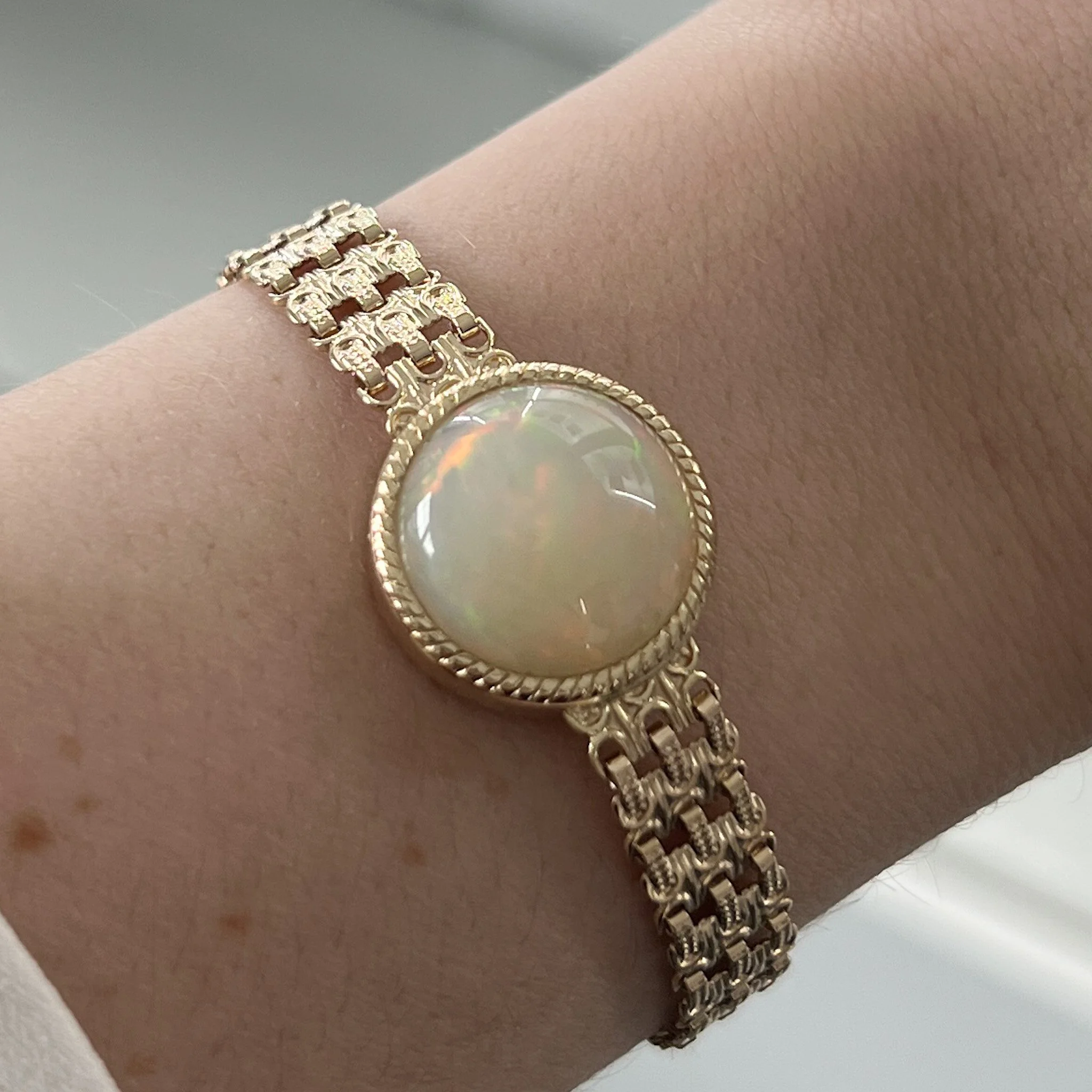Choosing your perfect gemstone: Opal
Opal is derived from the Greek ‘opallios’ which describes the flashing rainbow colours called ‘play-of-colour’. It’s these unique characteristics that make opals many people’s favourite. It is the birthstone for October and gifted to celebrate 14 years of marriage.
BIRTHSTONE: OCTOBER
ANNIVERSARY: 14TH
COLOURS: VARIOUS COLOURS, MAINLY GREEN
MINERAL: SILICA
HARDNESS: 5.0 - 6.5 MOHRS, SOFT
More ABOUT OPAL…
Opal is the product of seasonal rains that drenched dry ground in regions such as Australia’s semi-desert outback. The showers soaked deep into ancient underground rock, carrying dissolved silica downward.
Be aware that there are many opal ‘triplets’ and ‘doublets’ on the market: these are a thin layer of opal backed by a black stone to make the opal look bigger and more vivid. So when you are buying an opal you need to make sure you can see the whole stone.
No two opals are the same. They can come in many colours, or combination of colours, and each one may differ considerably.
Every opal is different, it’s important to first establish the type of stone you are looking for. White or milky opals are the most popular type of opal used in jewellery, because of their attractive lustre. Red-hued opals are generally considered the most exotic. Black opals are the most expensive.
YOUR CARE GUIDE
Opal is generally stable, but heat from intense light can cause fracture lines called ‘crazing’. High heat or sudden temperature changes can also cause opal to fracture. Opal is attacked by hydrofluoric acid and caustic alkaline solutions.
The only safe way to clean opal is with warm, soapy water. Certain types of opals such as Ethiopian Opals must not be immersed in water. They will retain the water and turn a milky colour. It’s generally advised not to wear any opals in the shower or swimming.






